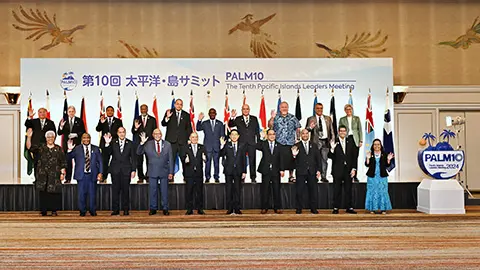VOL.194 JULY 2024
JAPANESE SMALL AND MEDIUM ENTERPRISES LEADING THE WORLD
Innovative Drying Equipment Unique in the World
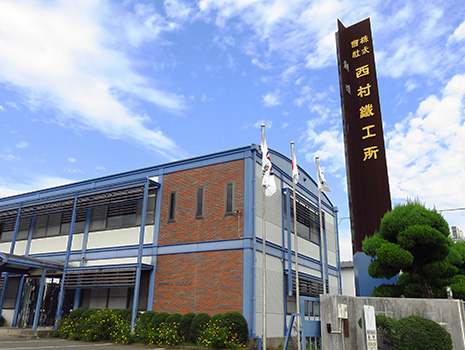
Photo: NISHIMURA WORKS Co., Ltd.

Photo: NISHIMURA WORKS Co., Ltd.
Among the waste generated during the manufacturing process, some materials have value and can be sold for profit. By monetizing these valuable materials, the amount of waste is reduced. Supporting the realization of such a circular economy* is the innovative Compact Disk (CD) Dryer® by NISHIMURA WORKS Co., Ltd., based in Saga Prefecture.
Kyushu, located in the southwestern part of Japan, is renowned for its shochu, a popular distilled spirit. After distillation, a liquid containing organic matter**, known as “shochu lees,” is produced. The CD Dryer by NISHIMURA WORKS was originally developed to evaporate the moisture from shochu lees, allowing the dried product to be sold as fertilizer and feed, thereby generating revenue. We interviewed IZUMI Akira, Director and General Manager of the Sales Division, to learn more about the development of this innovative drying equipment.
“Production began in 1987. At that time, shochu lees were disposed of through ocean dumping, which was cost-free, so the CD Dryer was not used by shochu manufacturers. However, about 20 years later, the adoption of the London Protocol strengthened restrictions on ocean dumping of waste, leading to increased demand from shochu manufacturers for the CD Dryer. The equipment gained recognition for its capability to significantly reduce waste by evaporating the moisture from shochu lees,” says IZUMI.
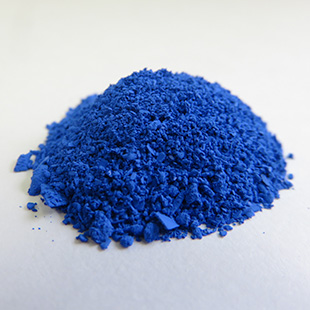
Photo: NISHIMURA WORKS Co., Ltd.
With the changing times, the purpose of using the CD Dryer evolved significantly in the shochu industry from monetizing valuable materials to reducing disposal volumes. In addition, it has supported a range of applications, including metal recovery from waste liquids at rare metal recycling plants and the production of powdered feed***, leading to numerous successful implementations.
“For example, a company engaged in rare metal recovery was discharging around 10 tons of copper-containing wastewater daily and spending 90 million yen annually on disposal costs after dewatering. However, by introducing the CD Dryer, they were able to extract copper from the wastewater, reducing disposal costs by 60 million yen per year and generating 5 million yen annually from copper sales. Notably, over the past three years, the equipment’s adoption has increased significantly overseas, expanding to more than 10 countries, primarily in Asia,” explains IZUMI.
The drying technology is characterized by its innovative design. “Using heat conduction**** to indirectly heat the material and evaporate moisture is a common approach, but the specific method employed here is born from a unique concept. The system utilizes metal disks, approximately 1 meter in diameter and 2 cm thick, which are central to the process. These disks rotate up to 20 times per minute inside the device. The disks are heated internally by steam to temperatures exceeding 100°C on the surface. When the target liquid is poured onto the rotating disk, the moisture evaporates, leaving the dried material on the surface, which can then be collected. This method is unparalleled worldwide, with patents granted for both the disk’s structure and the heat source used.”

Photo: NISHIMURA WORKS Co., Ltd.
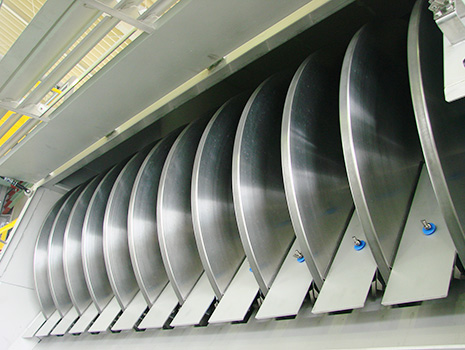
Photo: NISHIMURA WORKS Co., Ltd.
The key feature of this technology is the use of both sides of the thin disks for heating the target liquid. By arranging up to 16 disks in a line, the device increases the heating surface area, resulting in a more compact and thermally efficient system compared to traditional equipment.
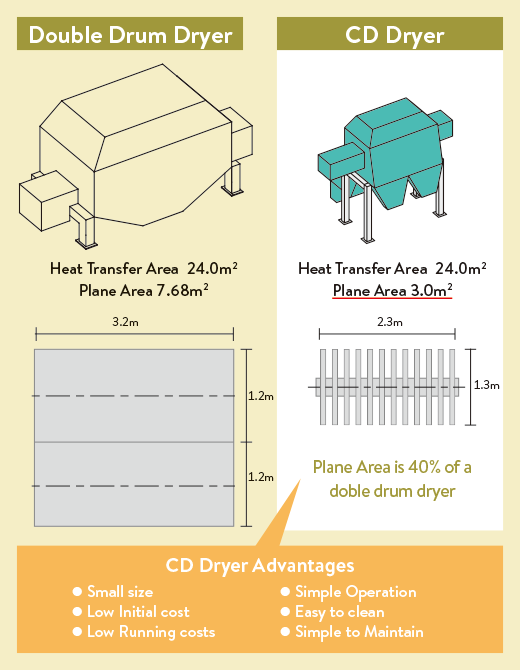
On the left is a typical drying device. The CD Dryer utilizes both sides of multiple disks as the heat transfer surface for heating the target material. This design allows for the same heat transfer area to be achieved with a smaller installation footprint.
“This drying equipment is the result of our research and development based on the idea that it functions as a heat exchanger*****. By improving thermal efficiency, we have also achieved strengths in energy savings and reduced operational costs. Our company philosophy is ‘Challenge and Create’ Since our founding, we have focused on the challenge of creating industrial machinery that does not yet exist in the world,” says IZUMI.
This company philosophy led to the creation of the innovative drying equipment utilizing disks.
* A circular economy system aims to continuously create new value while consistently recycling resources (including products and components).
** Compounds that contain carbon.
*** A process that improves handling and preservation by converting raw materials into powder or granules.
**** The phenomenon where heat transfers through an object from a high-temperature area to a low-temperature area.
***** A device that promotes efficient heat transfer by utilizing the property of heat moving from high to low temperatures.
By MOTEGI Shunsuke
Photos: NISHIMURA WORKS Co., Ltd.

